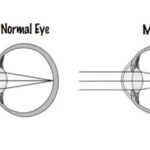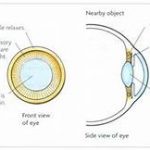Understanding Convergence Excess: A Comprehensive Guide for Optometrists
Convergence excess (CE) is one of the most common non-strabismic binocular vision disorders encountered in clinical practice. It is characterized by esophoria (inward eye deviation) at near, with orthophoria or low to moderate esophoria at distance, a high AC/A (accommodative convergence/accommodation) ratio, and reduced negative fusional vergence (NFV).
Prevalence and Epidemiology
Research highlights the prominence of convergence excess. Hokoda reported a 5.9% prevalence among symptomatic individuals seeking vision care, compared to 4.2% for convergence insufficiency. A study by Scheiman et al. on 1,650 children aged 6-18 years revealed an 8.2% prevalence, while Porcar and Martinez-Palomera found a 1.5% prevalence in a university population.
Signs and Symptoms of Convergence Excess
Symptoms:
Blurred vision
Diplopia (double vision)
Headaches
Difficulty concentrating on near tasks
Eyestrain and fatigue during prolonged reading
Loss of attention during near work


Note: Not all patients with convergence excess present with symptoms. Some patients suppress, some have strong vergence adaptation, and others have a high pain threshold or avoid near work, thereby masking the condition.
Signs:
Esophoria greater at near than at distance (at least 3 prism diopters more esophoric at near)
High AC/A ratio (typically >7:1)
Reduced smooth and jump negative fusional vergence (NFV) at near
Low Positive Relative Accommodation (PRA)
Failing -2.00 D on binocular accommodative facility (BAF) testing
High plus finding on monocular estimation method (MEM) retinoscopy
Low fusional divergence amplitudes
Etiology and Progression
The higher esodeviation at near is primarily due to a high AC/A ratio.
The angle of deviation is usually stable until school age, after which it tends to increase due to higher near visual demands.
Differential Diagnosis
It is essential to rule out underlying pathological conditions when diagnosing convergence excess.
Functional Disorders:
Basic Esophoria (equal esophoria at distance and near)
Divergence Insufficiency (greater esophoria at distance)
Esophoria secondary to accommodative anomalies
Pathological Causes:
Spasm of accommodation due to inflammation (e.g., scleritis, uveitis, or iritis)
Sympathetic paralysis or neurological conditions like syphilis
Drug-induced spasm (e.g., eserine, pilocarpine, sulfonamides, or excessive vitamin B1 intake)
Analysis of Binocular and Accommodative Data
In convergence excess, all direct and indirect tests of NFV tend to be reduced.
Key Tests Include:
Negative Relative Accommodation (NRA) and Positive Relative Accommodation (PRA): Patients often show low PRA due to limited ability to diverge.
Binocular Accommodative Facility (BAF): Failure with minus lenses indicates poor NFV.
Monocular Estimation Method (MEM) Retinoscopy: Shows a higher plus finding, indicating reduced accommodative effort to control convergence.
AC/A Ratio Calculation: A high AC/A ratio confirms the diagnosis.
Treatment and Management Strategies
1. Refractive Error Correction:
Prescribe maximum plus for hyperopia (+0.50 D or greater).
Perform cycloplegic refraction in cases with high tonic vergence.
2. Added Plus Lenses for Near:
Determining the lowest amount of plus that relieves symptoms and normalizes binocular data is crucial.
The use of added plus lenses for near work is highly effective due to the high AC/A ratio. By reducing accommodative effort, the demand on accommodative convergence decreases, thereby reducing esophoria.
A typical prescription ranges from +0.75 D to +1.00 D for near tasks.
3. Vision Therapy (VT):
Recommended when NFV is severely reduced or symptoms persist despite optical correction.
Focuses on improving NFV and accommodative flexibility.
Typically requires 12-24 sessions.
4. Prism Therapy:
Rarely needed due to the effectiveness of plus lenses.
Base-out prism may be considered in cases with high tonic vergence and esophoria at distance.
5. Pharmacologic Intervention (Last Resort):
Echothiophate iodide or diisopropyl fluorophosphate (DFP) ointment can be used to reduce accommodative effort.
Regular monitoring is essential due to side effects like headaches, iris cysts, cataracts, and retinal detachment.
Conclusion
Convergence excess is a prevalent binocular vision disorder that significantly affects near visual tasks. Early diagnosis, appropriate refractive correction, and the use of added plus lenses can effectively reduce symptoms and improve visual comfort. In more severe cases, vision therapy and pharmacological management can further enhance patient outcomes.
By understanding the diagnostic findings and their correlation with the AC/A ratio, optometrists can effectively tailor management strategies for better visual performance and quality of life.
References:
[1] Clinical Management of Binocular Vision : Heterophoric , Accomodative , and Eye Movement Disorders [ Fourth Edition ] by Mitchell Scheiman And Bruce Wick
[2] American Academy of Ophthalmology [AAO]










